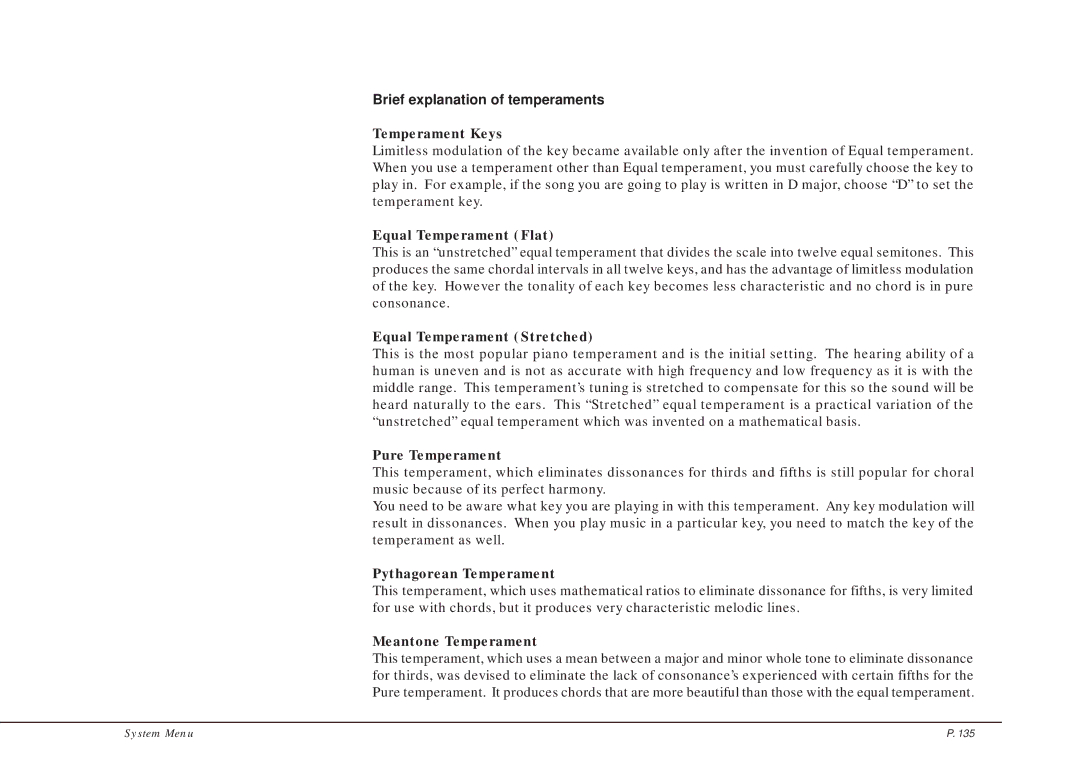Brief explanation of temperaments
Temperament Keys
Limitless modulation of the key became available only after the invention of Equal temperament. When you use a temperament other than Equal temperament, you must carefully choose the key to play in. For example, if the song you are going to play is written in D major, choose “D” to set the temperament key.
Equal Temperament (Flat)
This is an “unstretched” equal temperament that divides the scale into twelve equal semitones. This produces the same chordal intervals in all twelve keys, and has the advantage of limitless modulation of the key. However the tonality of each key becomes less characteristic and no chord is in pure consonance.
Equal Temperament (Stretched)
This is the most popular piano temperament and is the initial setting. The hearing ability of a human is uneven and is not as accurate with high frequency and low frequency as it is with the middle range. This temperament’s tuning is stretched to compensate for this so the sound will be heard naturally to the ears. This “Stretched” equal temperament is a practical variation of the “unstretched” equal temperament which was invented on a mathematical basis.
Pure Temperament
This temperament, which eliminates dissonances for thirds and fifths is still popular for choral music because of its perfect harmony.
You need to be aware what key you are playing in with this temperament. Any key modulation will result in dissonances. When you play music in a particular key, you need to match the key of the temperament as well.
Pythagorean Temperament
This temperament, which uses mathematical ratios to eliminate dissonance for fifths, is very limited for use with chords, but it produces very characteristic melodic lines.
Meantone Temperament
This temperament, which uses a mean between a major and minor whole tone to eliminate dissonance for thirds, was devised to eliminate the lack of consonance’s experienced with certain fifths for the Pure temperament. It produces chords that are more beautiful than those with the equal temperament.
System Menu | P. 135 |
